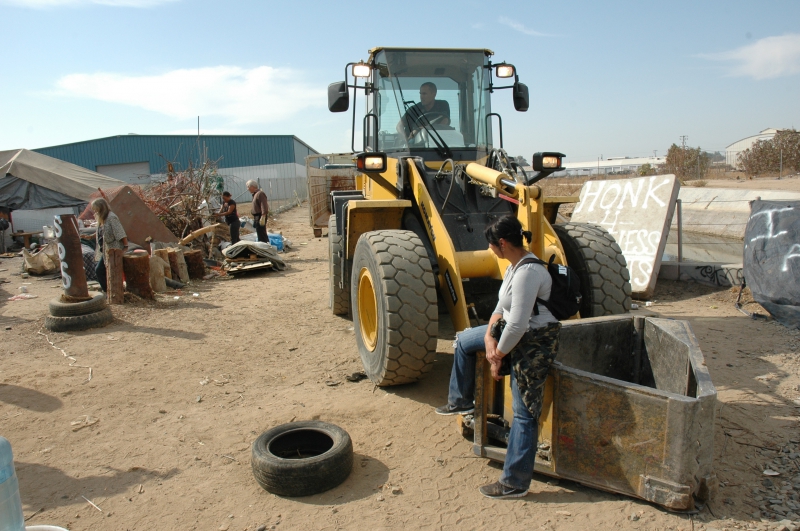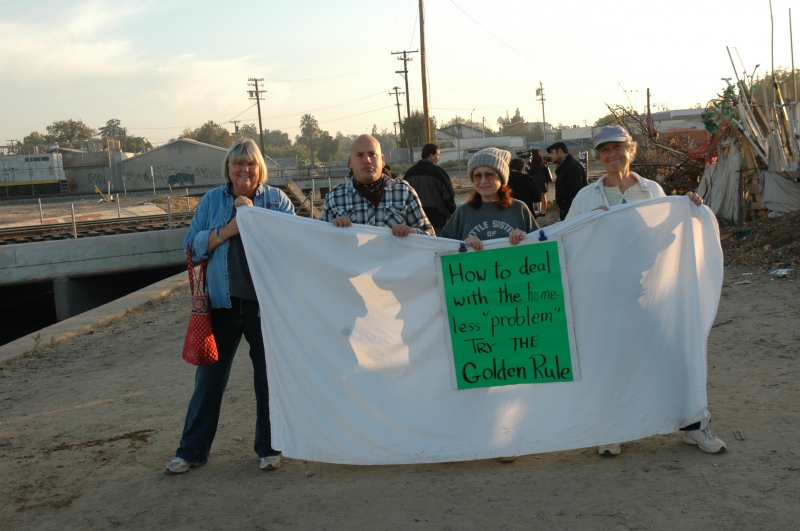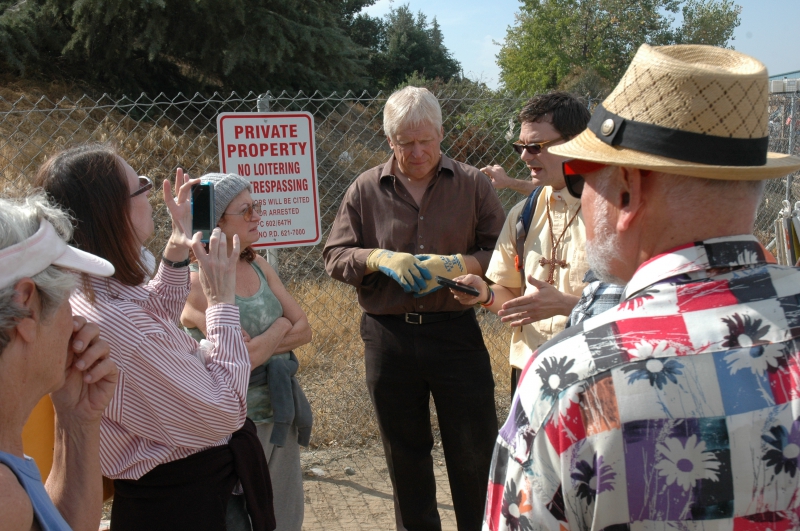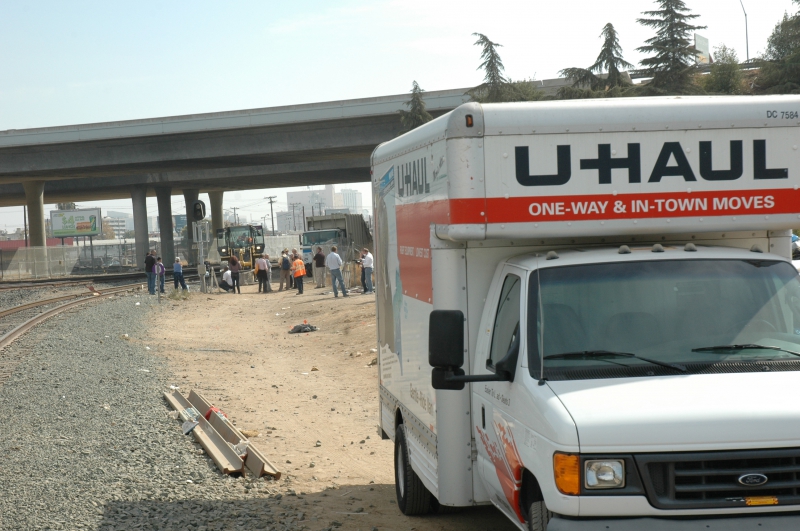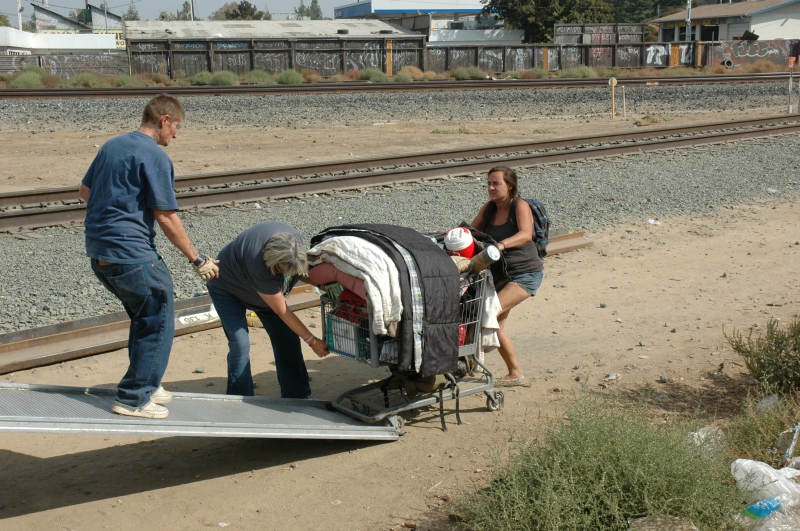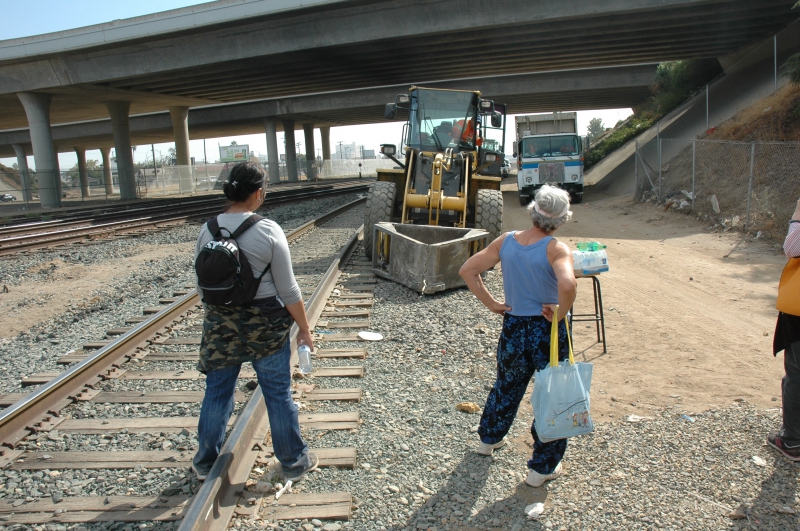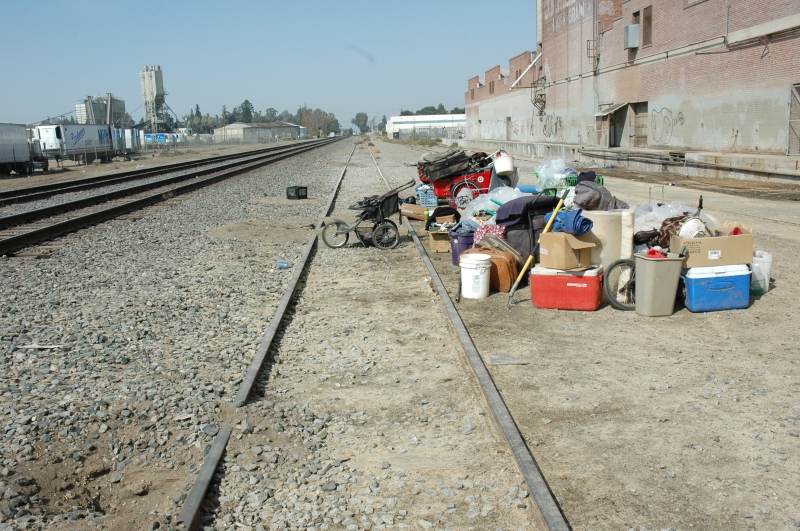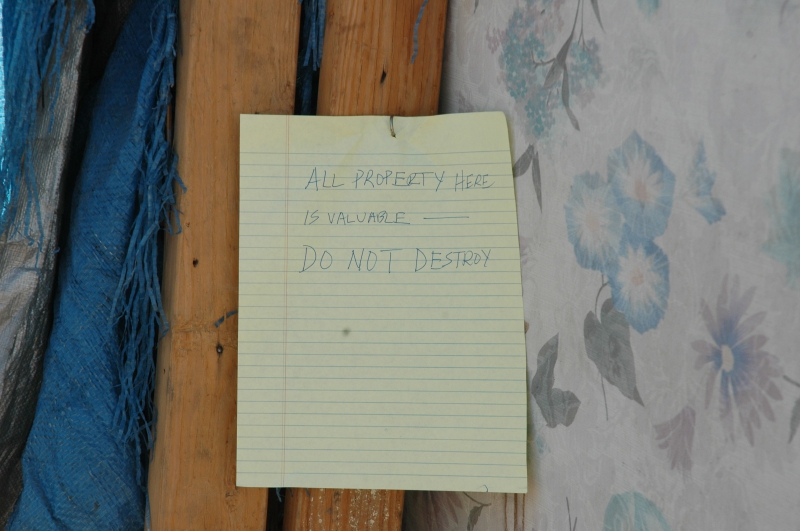I think consulting with those who formed these camps would be helpful in understanding the power necessary to effectively push past City Council and Take Back Santa Cruz/Downtown Business Association/Santa Cruz Neighbors bigotry and fear in the current Sanctuary Camp debate.
Simply being reasonable, making logical arguments, or appealing to city officials just doesn’t do the trick. As the poisoned hammer of Mayor Bryant’s toxic and misnamed Public Safety Citizens Task Force comes down (see
http://www.cityofsantacruz.com/Modules/ShowDocument.aspx?documentid=34511for the explicit anti-homeless options being seriously considered). Appealing to right-wing sensibilities by using anti-homeless stereotypes about a “public safety” problem is also counter-indicated and furthers the rightist agenda of cracking down on homeless people with the cruel and phony “don’t enable” argument.
Right 2 Dream Too: Moving options unclear after Portland City Council again delays vote
PORTLAND, OREGON – JULY 23, 2013 – Pamela Dahl, 25, is one of the people at Right 2 Dream Too who is at the security desk at the entrance. She’s walking past some of the 79 sleeping bags they take to the laundry every week. Dahl says, “I used to put my makeup on every day in high school. There are more important things now on the street.” Commissioner Amanda Fritz’s office is negotiating with the Right 2 Dream Too homeless camp in Old Town to move from its highly visible location at West Burnside Street and Northwest Fourth Avenue to under the west end of the Broadway Bridge. (Benjamin Brink/The Oregonian)
A decision to move the
Right 2 Dream Too homeless camphas been delayed for up to 60 days by city officials who said Tuesday they’re leaving negotiations with camp leaders in the hands of Pearl District developers, businesses and residents opposed to the proposal.
Tuesday’s setback is the latest for
Commissioner Amanda Fritz, who unveiled a plan to move the camp in September as a done deal. Weeks later, it ran into a political buzz saw wielded by influential developer Homer Williams and residents from the plugged-in Pearl District neighborhood association.
Neither business interests nor Right 2 Dream Too leaders would discuss negotiations Tuesday.
Fritz, disappointed that her proposal to relocate the settlement from West Burnside Street to under the Broadway Bridge has been upended and delayed, said Williams’ group hasn’t proposed a real solution since the City Council first postponed its vote on the camp at an Oct. 3 public hearing.
“They haven’t put anything viable on the table,” Fritz said Tuesday, a day before the City Council was scheduled to revisit the issue.
Mayor Charlie Hales, the one who asked Fritz for more time, said he’s hopeful Right 2 Dream Too negotiations will lead to a better solution.
“We believe there’s progress, in terms of additional resources coming to help address the problem, and maybe a better solution than just moving tents from one place to another,” said Hales, declining to provide specifics.
A spokeswoman for Hales defended the city’s decision to leave negotiations to homeless campers and Pearl District leaders. Williams and others wanted time for a solution, K.C. Cowan said, and that’s what the city is providing.
“We will be at the table when there’s something definitive to look at,” she said. “But right now we’re not the group that’s saying, ‘We want an alternative.’”
A little more than a month ago, Fritz called a press conference at City Hall to announce a deal to move Right 2 Dream Too, which sleeps about 70, from its location at Northwest 4th Avenue and Burnside Street to the Pearl District.
Fritz proposed the move hoping to end a lawsuit filed by Right 2 Dream Too, which formed in October 2011. The group sued Portland’s Bureau of Development Services after the cluster of tents was labeled an illegal campsite and racked up fines for code violations.
Fritz, newly tasked with leading the development services bureau, suggested moving the camp from its marquee location in Chinatown to city-owned property underneath a Broadway Bridge onramp. She also proposed dropping the fines.
“I don’t necessarily need anybody else’s approval,” Fritz said at a Sept. 9 news conference, couching her plan as the end of a lawsuit instead of a controversial move. “I certainly have the mayor’s strong support. I’ve briefed each of my colleagues on the second floor about it and have not heard any particular concerns.”
But almost immediately, Williams and Patricia Gardner, president of the Pearl District neighborhood association, threated lawsuits or legal action over zoning rules and long-standing development agreements.
After a 5-hour-plus City Council hearing Oct. 3, where dozens of people – including Williams, whose company donated $15,000 to Hales’ mayoral campaign – spoke against the plan, Portland’s mayor delayed action for two weeks.
Hales on Tuesday said more time is needed and hopes a plan will be returned to City Council “sometime in the next 60 days.” The Pearl District location is still on the table, he said, but there’s a 50-50 chance another option could end up being better.
The proposed site, at Northwest Lovejoy Court, is a block away from a hotel project being developed by Williams and business partner Dike Dame.
Asked about Williams’ efforts, Hales said: “Whenever people bring private money to the table in addition to whatever the public can put on the table, that’s better. I appreciate the citizenship of that offer. Obviously, there’s self-interests involved.”
Cowan later declined to say whether Williams or others have offered money to move campers to shelters or permanent housing.
Williams referred questions to Dame who referred questions to a John Mangan, a spokesman who works with Williams & Dame Development.
Mangan earlier this month helped lead a public relations effort criticizing the city over its lack of public process. On Tuesday, he said he wouldn’t discuss details of the Right 2 Dream Too negotiations.
“We’re really not ready to talk about those,” he said.
It’s also not clear how many meetings have taken place or who has attended. Neither Cowan nor Mangan would provide details. Ibrahim Mubarak, a co-founder of the camp, also declined to talk about negotiations Tuesday.
Fritz said recent considerations involved moving the camp to the Central Eastside, specifically at the Salvation Army property at 200 S.E. Martin Luther King Jr. Blvd. But Fritz said the property is no longer available.
Before settling on the Pearl District location, Fritz’s chief-of-staff said, city officials also considered a separate site underneath the Broadway Bridge and one next to the Bud Clark Commons, both of which have contamination issues.
Fritz said she’s agreed to pnly a one-week delay but wouldn’t address late Tuesday what would happen if the proposal doesn’t return to City Council next week. Hales is scheduled to be in China the following week on city business.
With winter approaching, Fritz said she’s unwilling to wait 60 days and has called on Williams and others to step up and find a solution. Cowan, Hales’ spokeswoman, said officials think that will happen “fairly soon.”
“This is really their process,” Cowan said. ” We’re saying, ‘Go. Do. Come back to us when you’ve got something.’
” I know,” she said, ” we can’t let it go on forever.”
— Brad Schmidt
Right 2 Dream Too: Mayor Charlie Hales lauds homeless group, delays vote on move to Pearl District
This city owned lot is still the desired location for Right 2 Dream Too, but Mayor Charlie Hales said he wants to bring worried developers and neighbors to the table. (Benjamin Brink/The Oregonian)
After five hours of public testimony Thursday night, Mayor Charlie Hales had nothing but good things to say about Right 2 Dream Too, the
two-year old homeless community at the gate to Portland’s China Town.”This unique community,” Hales said, “Is doing valid work in a special way that no government agency ever thought of.”
But the first public hearing on whether the city can legally move the campers to a city-owned parking lot underneath a Broadway Bridge on-ramp won’t be the last.
Hales said the council should meet with Pearl District residents and prominent business leaders such as developer Homer Williams, who pleaded with the council to have a seat at the table.
“Frankly, I think any elected leader would be crazy to reject an offer like that,” Hales said.
Commissioners will meet again to discuss the fate of R2D2 on Wednesday Oct. 16, where they could make a decision about the legality of the move, or take additional public comment if a compromise or another proposal comes to the table.
“This has been probably the most memorable hearing that I remember,” Commissioner Amanda Fritz said.
Fritz led the charge to bring a settlement to a lawsuit involving R2D2 and its landlord at its current home on a West Burnside Street lot. R2D2 organizers say it offers homeless people a safe, dry and free place to stay off the streets.
Fritz also leads the Bureau of Development Services, which issued the controversial zoning decision last week authorizing moving the tent community to a city parking lot.
At the beginning of the five–hour affair, the council chamber was packed. The standing-room-only crowd spilled into an overflow room, and it was a diverse group. Women in pantsuits sat next to men in blue T-shirts.
Testimony came from residents young and old, including a mother who recited a poem penned by two children. Backers of multimillion dollar residential and commercial developments sat, for hours, in the same room as dozens of homeless people and supporters.
More than 130 people signed up to testify, and the majority of them followed through.
Public comments, from all sides of the issue, drew pockets of applause, cheers, boos and the occasional standing ovation.
By the end of the night, the bulk of the public testimony came from homeless people and supporters.
Earlier, Pearl District residents largely expressed concerns and fear of the uncertainty and might follow if the tent city relocated to their neighborhood.
Concerns ranged from the arrival of more crime, to the effect on property values, to how the move would hurt business bottom lines. One developer said he’s bracing for a 1 percent drop in apartment rentals, which he said could cost $500,000.
Christopher Hanford, co-owner of Davis Street Tavern near the current R2D2 site, said he was “actually thankful the camp is moving.” Handford said his sales “went off a cliff” once the camp opened in 2011.
Homer Williams and Dike Dame, the business partners and juggernaut developers in Portland’s Pearl District, testified together. Dame warned council was “truly on the precipice of a very bad decision.”
“You’re eliminating the use of our brains, you’re eliminating the use of our resources,” Dame said, “By cramming this deal down our throats.”
Ibrahim Mubarak, a co-founder of R2D2, said that Pearl residents were ignorant of how the camp operated. He said a drop in property value could be good.
“Then maybe there’s be some affordable housing,” he said.
Thursday’s meeting was supposed to be about the zoning memo released last Friday by the Bureau of Development Services designating R2D2 as a “community asset.”
The memo stipulated the camp wasn’t subject to building permits, and therefore didn’t have to go through a rigorous design review or land use review process.
Most of the testimony ignored the particulars of that memo.
But Christe White, a prominent land use attorney representing Williams & Dame and others, blasted the council for the “contrived nature” of the document. “The city can’t have it both ways,” White said. Either R2D2 was a mass shelter or it wasn’t; either way it was subject to stringent design reviews.
White said approving the zoning decision “dismantles the social contract” in the city, and would lead to more homeless camps, or rest areas, across the city. She urged the city to amend its code and legitimize the camps “if that’s what you want to do.”
That is what many of the homeless supporters want to do, as they advocated for using vacant lots, buildings and public facilities to house the homeless.
Michael O’Callahan, a co-founder of R2D2, said homeless people are even more vulnerable than other residents. “Let us be safe just like you all are,” he said to Pearl District residents. “R2D2 is a good neighbor.”
Commissioner Steve Novick seemed impressed by R2D2’s organization as well. He tried to assuage the concerns of some homeless advocates about Pearl residents waging a “class war” and being more concerned about their property values than human life.
“I heard more fear than greed,” Novick said. He added there was compelling evidence from Thursday’s testimony that R2D2 residents and supporters feel so strongly about the camp because it is a safe and dry place off the streets.
R2D2 started in October 2011 at the Burnside property owned by Michael Wright and three business partners. Wright said he initially let the group stay as a jab at the city. But the rest area’s presence immediately started racking up fines.
As part of the settlement agreed upon last week, the city waived $20,957 in fines and agreed to move the camp to what’s known as Lot 7, a parking lot owned by the Portland Development Commission beneath the Broadway Bridge’s Lovejoy ramp. Camp advocates agreed to drop a lawsuit against the city in exchange for the settlement.
Commissioner Nick Fish missed the entire meeting for a previously scheduled event. Commissioner Dan Saltzman, the current Housing Bureau manager, slipped out for a Northwest Housing Alternatives event at 7 p.m.
Fritz said she would have preferred to vote Thursday rather than delay the matter. The clock is ticking to reach a final agreement, Fritz said, as the deadline for a use agreement with R2D2, part of the legal settlement agreement released last week, is in 25 days.
Earlier this week, lawyers representing Williams and other Pearl District developers indicated they would initiate arbitration and seek an injunction to stop the move if the council approved the deal on Thursday.
— Andrew Theen
